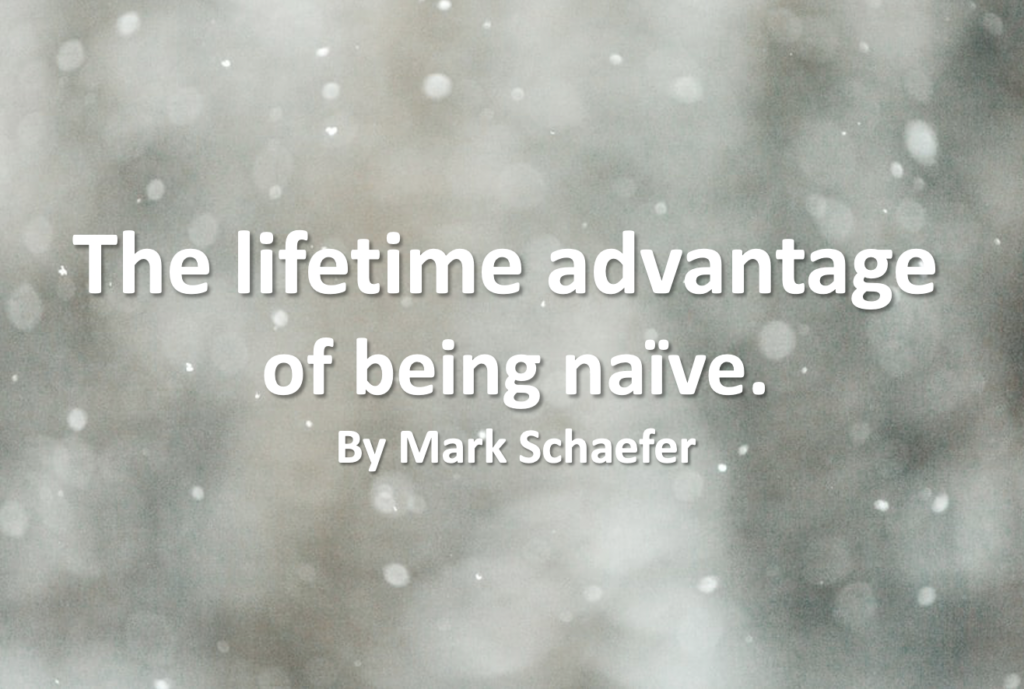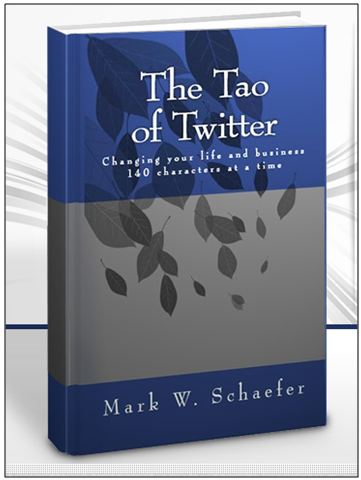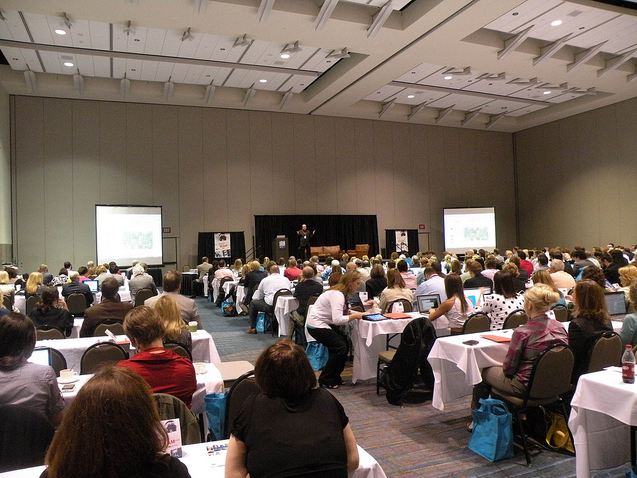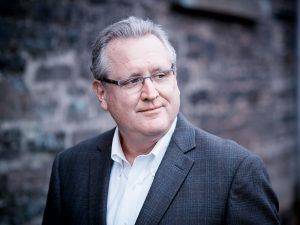
When I write for you in this space, I rarely look back. My job is to think about what’s coming next — the future is much more interesting to me! However, I’ve crossed a significant career milestone that also represents a very important life lesson worthy of commentary. Being naive can be a life skill.
This marks the tenth anniversary of the publication of my first book, Tao of Twitter. When I wrote this book, I had no idea what I was doing. And that turned out to be an amazing advantage. In fact, I tend to “fumble forward” a lot. Here is my story and how being naive creates momentum.
The early blog
I began this blog in 2009. I didn’t study blogging. I had no idea what I was doing. I did it as an experiment … “Let’s learn about it and see what happens.” Nearly 700 weeks later, I’m still going.
But within a few months of my start, it was attracting a lot of attention. In these early days, there weren’t many bloggers with corporate business experience so I suppose I was a novelty. I could connect the dots between emerging technology and business reality in a unique and honest way and it caught on. I didn’t know the rules or best practices of blogging. I made a lot of mistakes but I kept fumbling forward.
Later, Mitch Joel told me he thought I would never make it as a blogger. He thought I was too late and too old. I didn’t know any better. I just kept going.
In this time period, social media was going mainstream and traditional publishers were hungry for books on any digital marketing topic. I was courted by several publishers attracted by the success of my blog.
I did have an idea for a book. It started when I was bored at home one night …
The beginning of Tao
In those early days, I hated Twitter. It felt like a complicated, disconnected wall of noise.
I decided to give it one more try and randomly clicked on a trending topic — #NewFluName. I knew enough by this time to know that these topics represented the most popular real-time conversations in the world. It was a moment I’ll never forget.
This was a time when the pork industry was having a fit about the name “Swine Flu.” They thought the name was hurting sales of “the other white meat” and asked the public to call it something else. So thousands of people from around the world tweeted their contributions — HILARIOUS new names, like,
- The Aporkalypse
- This little piggy went to the bathroom
- Hog Flashes
- Porkenstein
- Mad Sow Disease
- Hamageddon
- and my favorite, “Hamthrax”
Yes, it broke the monotony of my evening . . . in fact, I laughed until I cried! But something more important happened. I was witnessing a real-time, global brainstorming session!
It dawned on me that at no other time in history could that conversation have taken place. It was an awesome moment, an inspiring moment. I began to think about the implications for business, for networking, for solving problems, for learning . . . and for me.
I had an epiphany. Twitter seemed so complicated because every book and blog about it was technical, explaining all the weird acronyms and quirky traditions. These authors were missing the whole point. Twitter was about human connection. It was the most human social network. If you knew that, it was easy to understand.
The naive book venture

First edition of Tao
My idea for a book explained the human side of Twitter. I wanted to write a tiny book that a person could read on a two-hour plane trip and feel inspired to give the platform a try.
New York publisher McGraw-Hill was interested in the idea but insisted that the book had to be at least 240 pages long so they could charge more money.
To me, that was missing the point. It had to be short to be useful. Like a tweet!
So I decided to self-publish. In 2010, self-publishing was a new technology. Once again, I literally had no idea what I was doing. It was probably a dumb idea to reject the publisher’s offer but I stuck to my conviction and fumbled forward once again.
As far as I know, it was the first self-published social media book in history and it took off like a rocket. Because the book was so small, it cost less than $2 to produce. So, I gave them away. When the momentum started, I raised the price month by month. At the end of the first year, I had sold more than 6,000 copies, which is a lot for a business book from a no-name dude.
Eventually, the rights to the book were purchased by McGraw-Hill (when they realized I was right!) and it has been updated four times. The Tao of Twitter is the all-time bestselling book on Twitter.
If I had followed conventional wisdom — heck, if I had even known conventional wisdom — I never would have started. Being naive saved me again.
Naive and the social media conference
The next problem I faced was social media conferences.
First, it was almost impossible for new speakers to break-in. One organizer told me he wasn’t interested in me because “we have our guys.” And he did mean guys. The events kept hiring the same 10 white guys for every event and I wasn’t one of them.
Second, the events were insanely expensive because they were in cities like New York City or San Diego, blocking many worthy people from attending.
So, I decided to have an event called Social Slam in an unexpected (and low-cost!) destination, my lovely hometown of Knoxville, TN. And I charged $89 a ticket. I had a few high-profile speakers but mostly turned the mic over to up-and-coming people who deserved a chance in the limelight. And half of the speakers were women. I made sure of that.
All I did was post about the event on Twitter. No ads. No influencers. In six weeks we had 400 people registered. I panicked. What was I going to do with 400 people? We cut off the registration and set about putting on the show of our lives.
The people who attended will still fondly tell you it was among the best events they’ve attended. We held it for three years with 650 people jamming the place in the final year — from 28 states and seven countries. It was still $89, and because we did a good job with sponsorships, we always made money.

Being naive worked
There is a common theme among these milestones. I benefitted from being naive.
I didn’t prepare my blog over months of study. I had no prior knowledge about writing, publishing, and distributing a book. In hindsight, creating a national social media conference for $89 per ticket seemed way over my head.
But I just did it.
I was almost childlike in my naive enthusiasm. And that is a huge advantage.
According to research by Alison Gopnik, the older we get, the harder it is for us to learn and reimagine. This isn’t just habits hardening into dogma. It’s encoded into the way our brains change as we age. And it’s worsened by an intellectual and economic culture that prizes efficiency and dismisses play.
The child’s mind is tuned to learn. They are, she writes, the R. & D. departments of the human race. But a mind tuned to learn works differently from a mind trying to exploit what it already knows.
The problem of infinite information
Having access to infinite information on any topic can be a problem for the adult mind. We can become so paralyzed by analysis we never even start.
If I had deeply studied what I was up against trying to start another marketing blog, self-publish a book, or start a new conference I never would have done any of it. The data would have said “no.”
I’m not necessarily recommending rushing headlong into bold new territories without analysis, but I do think there is a balance. When people sign up for an hour of my time for consulting or coaching, I often find a person suffering from Analysis Paralysis. They are studying themselves into oblivion.
We hold the accumulated knowledge of the human race in the palm of our hand. There is no excuse for not making the perfect decision, right?
But there is always one more post to read, podcast to hear, or video to watch. We’re afraid of not making the perfect decision because there is no excuse not to.
And yet …
Move toward your seam
The blog, the book, the conference worked. Were they perfect? Not by a long shot. But I would not be where I am today if I had hesitated.
My success might seem like luck. But while writing my book Cumulative Advantage I learned (in hindsight!) there was a method to my madness.
Momentum begins when you 1) pursue an idea (not just think about it!) and 2) your idea fits with emerging opportunities or “seams” — an undefended niche. These fractures in the status quo are opening all the time.
Before the internet, testing a new idea was pretty risky. You probably had to actually make something and widely distribute it to have a chance. Starting a blog, self-publishing a book, and testing the market for a conference represented almost no risk with the help of technology and social media.
Are you willing to trust your instincts, or are you held in place by an impossible goal of making the perfect decision?
Fumbling forward with my ideas resulted in some of the most rewarding accomplishments of my career. I’ve had failures, too, but those have also been rewarding because they moved me closer to my ultimate destiny.
Often, having a naive and child-like attitude toward the unknown leads to a lifetime of momentum … and fun.
 Mark Schaefer is the executive director of Schaefer Marketing Solutions. He is the author of several best-selling digital marketing books and is an acclaimed keynote speaker, college educator, and business consultant. The Marketing Companion podcast is among the top business podcasts in the world. Contact Mark to have him speak to your company event or conference soon.
Mark Schaefer is the executive director of Schaefer Marketing Solutions. He is the author of several best-selling digital marketing books and is an acclaimed keynote speaker, college educator, and business consultant. The Marketing Companion podcast is among the top business podcasts in the world. Contact Mark to have him speak to your company event or conference soon.
Follow Mark on Twitter, LinkedIn, and Instagram.
Illustration courtesy Unsplash.com


